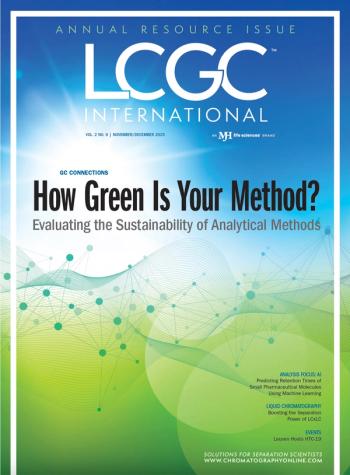
- Special Issues-05-02-2016
- Volume 29
- Issue 5
Recent Developments in LC Column Technology: Impact on a World of Disciplines
A brief introduction of the article presented in this supplement.
There have been many advances in liquid chromatography (LC) during the past decade. Much attention has been paid to the development of new and improved particle designs to achieve higher efficiency and there have been many new developments in the surface treatments of these particles that impact retention and selectivity. Novel particle designs such as sub-2-µm and superficially porous media have vastly improved the speed and efficiency of separation tasks. Newly developed chemical modifications and their implementation using these modern particle architectures have greatly expanded their utility. The underlying theme for this special supplement edition was to bring together articles that discuss how these innovations have impacted analysis across a wide variety of disciplines.
Andreas Breidbach from the European Commission, Joint Research Center at the Institute for Reference Materials and Measurements provides insight on how modern technologies have impacted the liquid chromatography–mass spectrometry (LC–MS) analysis of mycotoxins in food and feed. The work demonstrates the increased efficiency garnered from the use of superficially porous particles as well as added selectivity through modern surface chemistry modifications. Sheng Feng and colleagues from Ameritox provide examples of similar achievements for the analysis of an ever-growing number of synthetic cannabinoids for toxicology and forensic analyses. Again, superficially porous particles combined with alternative surface chemistries has enabled rapid, selective, and sensitive LC–MS–MS identification of 13 synthetic cannabinoids in patient urine samples. Collins and Needham from Alturas Analytics discuss the impact of recent column technology advancements and emerging developments in microflow LC technologies with respect to improving productivity in the bioanalytical contract research realm. The authors note that these technologies facilitate the development of robust and reliable methods, which may lead to lowering the cost of complex biotherapeutics. Continuing with the theme of bioanalysis, Lloyd and Majors discuss the importance of particle architecture and surface treatments with respect to current needs in size-exclusion chromatography (SEC). The growing attention of the pharmaceutical market on biotherapeutics has necessitated the implementation of many modes of chromatography to fully characterize these complex systems. The authors point out the importance of particle pore size (and distribution), pore volume, and surface chemistry treatments as it pertains to modern SEC requirements. From the world of clinical diagnostics and testing, Wright and Hepburn provide examples of how modern particle technologies, surface modifications, and multiple-channel high performance liquid chromatography (HPLC) instruments have enabled faster analyses for various disease states and patient types. This is a crucial step towards providing high-quality health care. Lastly, Wallworth highlights some of the recent advances in chiral stationary phases (CSP) and how they impact important environmental concerns. Chirality plays a significant role in the study of pollutants, agrochemical usage, and pharmaceutical waste on our environment. The author anticipates that recent applications of CSPs on modern particle designs will positively impact research in this arena.
In applications ranging from food to pharma and biotherapeutics to biomes, advances in liquid chromatography are playing a critical role. Modern particle designs and surface chemistry treatments are continually being adopted in a variety of disciplines. As exemplified by the articles within this supplement, developments in our craft are improving the quality of life around the world. Enjoy!
Articles in this issue
Newsletter
Join the global community of analytical scientists who trust LCGC for insights on the latest techniques, trends, and expert solutions in chromatography.



